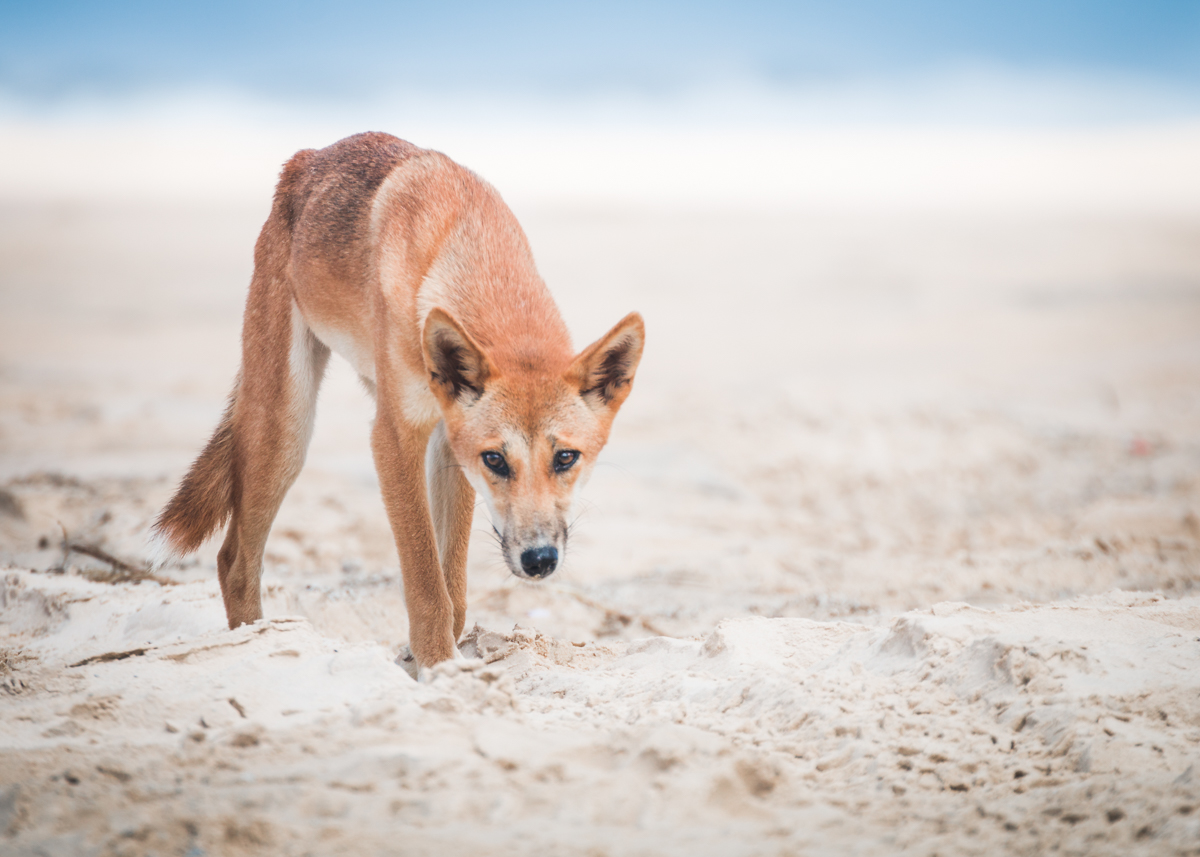From my time exploring New Zealand and Australia last year, seeing Dingoes on K’Gari was definitely the most goosebump-inducing experience!

K’Gari, also known by the colonial name of Fraser Island, is the largest sand island in the world. K’Gari is a word from the local aboriginal people’s language that means “paradise”.
With hundreds of kilometers of white sand beaches, diverse tropical forests and over 100 freshwater lakes you can see why the Butchulla people thought this place was heaven on earth.
We spent two days on the island and were extremely fortunate to have a couple of encounters with the unique dingoes that live there.

Dingo History
Lots of people think that dingoes are just Australian wild dogs but the science is actually a lot more complicated. The vast majority of animals called “dingoes” are a hybrid between domestic dogs (Canis familiaris) brought over by Europeans in the 1700s and the original dingo (Canis dingo), which was the only large placental mammal in Australia before Captain Cook arrived.

So where did the original dingoes come from? The first theory is that they came over on the ships of Asia seafarers about 4000 years ago. For this to be true dingoes must have been semi-domesticated Asian wolves that had then gone feral after they were brought to Australia.
Another theory, recently published by a group of Australian researchers, argues for a different origin of the dingo. They used genetic tools to unravel the evolutionary history of dingoes and discovered that they are most closely related to the New Guinea singing dog. The two lineages split about 8000 years ago.

Around the same time, sea levels were much lower and it is thought that Papua New Guinea and Australia were joined together in one landmass called the Sahul. This second theory suggests that the ancestors of modern day dingoes weren’t semi-domesticated companions of Asian explorers but were wild animals that independently migrated across the land bridges between Asia and Australia.
Either way dingoes have been in Australia for a long time, at least 4000 years. Up until the 18th century they were wild, apex predators with very little evidence of any sort of domestication.

All that changed when Europeans arrived and brought their domesticated dogs with them. European dogs spread all over Australia hybridising with dingoes until the only pure populations were left on remote, European-free islands – like K’gari.
K’Gari Dingoes
Genetic analysis of K’Gari’s dingoes shows that they are one of the last populations of original dingoes still alive. They have a fiery ginger coat and roam the island in large packs.
There has been little to no conflict between aboriginal people and dingoes for thousands of years but with a rise of tourism in the area human-wildlife conflict has appeared. In recent years the situation has gotten a lot worse and young children have even been killed by groups of dingoes.
Tourists feeding dingoes causes these wild animals to become habitualized and associate humans with food. This is obviously bad for the dingoes and the people and so animals that spend too much time begging for food get tagged on the ear. Repeat offenders are culled.

Tourism is one of the main sources of income in the area and dingoes play a key role here. These unique canids are worth more alive than dead. Proper education and good management will reduce any potential risk of harm to humans and to the wildlife.
After two magical days on the island, we were standing on the ferry about to leave for the mainland when a juvenile, skinny dingo sheepishly walked up to the boat ramp. It was sad to see this unique, wild wolf-like creature begging for food and it was even sadder to think that if this dingo didn’t learn how to feed itself quickly it would be culled.

There are only 200 dingoes left on this gigantic island. They are some of the last pure individuals of their species alive. They probably have the most untainted genes of any wild canid in all of Australasia. As our boat headed towards the mainland I watched that young dingo pacing up and down the beach on K’Gari through my telephoto lens until it faded into the distance.
